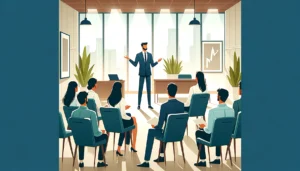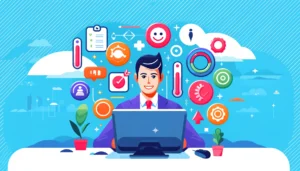Ryan Cheyne, Rentalcars on how to reposition your employment brand
- 4 Min Read
Ryan Cheyne, People Director at Rentalcars joined HRD Connect to discuss how they repositioned their employment brand, the drivers behind this project and the results 3 years in. Before joining Rentalcars Ryan spent 10 years as People Director at retailer Pets at Home who were named as the Best Big Company to work for by […]
- Author: Rachel Montgomery-Young
- Date published: Nov 10, 2017
- Categories

Ryan Cheyne, People Director at Rentalcars joined HRD Connect to discuss how they repositioned their employment brand, the drivers behind this project and the results 3 years in. Before joining Rentalcars Ryan spent 10 years as People Director at retailer Pets at Home who were named as the Best Big Company to work for by the Sunday Times.
How had Rentalcars .com positioned itself previously?
It was a start-up business and had been very successful, but of course a lot of focus had been internal, on driving growth in the business. It hadn’t really given any consideration to its external perception from an employment point of view.
The offices were really functional; it didn’t really shout about what it was doing and what it was like to work there and understandably that wasn’t a priority when they were trying to establish and build the business in the early days.
What was the thinking behind the repositioning? Why do it?
Businesses get to a scale where they need to attract more people, and the competition gets hotter in terms of the employment brand. It’s a very competitive market and you can’t rely on terms and conditions; you’ve got to have an offer that is compelling to attract the best people.
Rentalcars were bought by Price Line Group in 2010, one of the largest internet retailers in the world. But we were in offices that had no branding, no character – you could have been in an insurance business, a bank or a double-glazing firm. There was nothing to hook colleagues or visitors to the fact that we were a leading online travel business. As we needed more and more talented people, this became a more pressing issue for us.
What were the key messages you were hoping to put out as part of the rebrand?
That we are a modern tech company; that we are up there with the competitors in terms of working environment and the conditions that we can offer. At the end of the day we are a people business; we don’t own any cars, we have people that design and build websites and the customer proposition, and we have people in the call centre answering calls. So we wanted to get across the fact this was a cool place to come and work, have a good time and build a career.
How has the rebrand gone – what were the results?
We’re about 3 years in and we reached a significant milestone in May 2015 when we moved half of the company into a new office. That had all the funky features that you expect in a tech business: a decent canteen with Starbucks in it; themed rooms, and the rest.
Then we refitted the other half of the company in the old office up to the same standards. So that was a pivot point in terms of making a physical statement that we are changing as a business. I think we’re making good progress.
Internally we use traditional metrics like colleague retention, engagement surveys and general focus group feedback. We also use Glass Door. If you look at our scores there, three years ago we were at 2.2, we’re now at 4.2.
What was the biggest challenge you faced?
You very rarely get an opportunity to build a culture from scratch. We weren’t doing that here – we were trying to change a culture, so most of the challenges boil down to people who you have to help through that change; and some people don’t like it because they like the old culture and don’t see the benefits.
In a fast-moving internet business, we’re naturally impatient for success but you can’t change people’s attitudes and approaches overnight. It takes time and you need to trust what you’re doing is real and sustainable rather than just a flash in the pan, or the latest fad. I think the challenge is really just about making sure you take the people with you and help people adjust to change.









